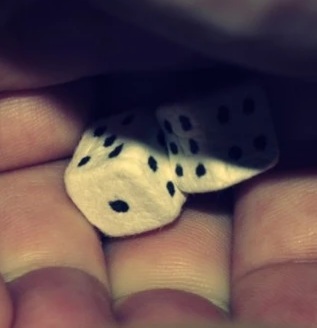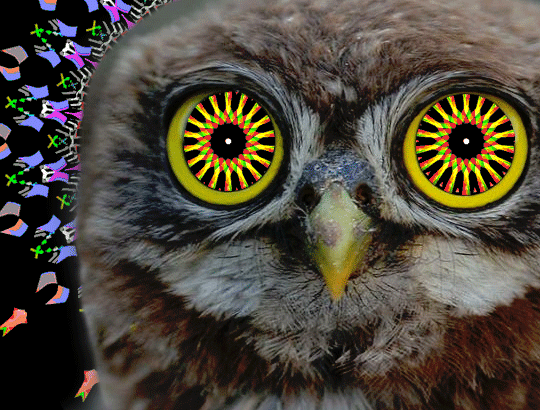I have an idea for campaign in my head but I need to find a good system to run it. Main thing I want is a system that would allow people to play humans, humanoids, and non-humans, with enough system and character customization depth to make the differences feel interesting and meaningful. Basically, if a player wants to be a fire magic-wielding phoenix or a psychic cat, they should be able to do that.
Ideally the system would also have at least some level of support for typical fantasy adventuring stuff (dungeon crawling, combat, social intrigue, etc.)
GURPS is a generic system with some of the most extensive customization imaginable, which is a double-edged sword because while it means you can make anything, it won't always be easy. The default character is a human (~6 feet tall, two arms with hands, two legs with feet, two eyes, etc) and everything is built off of that. It being generic is also double-edged, because it means that the GM needs to determine which rules and options they're enabling. For instance, there are like 6 magic systems, and I personally would recommend the Sorcery system, as it enables free-form casting.
For example's sake, the traits of the phoenix with fire magic would look something like this:
- Assuming the phoenix is smaller than a human, it takes Size Modifier -2 (~3ft tall). This means that it can fit through smaller gaps easier, and in combat that human-sized things are at -2 to hit it, and it is at +2 to hit them. It will also presumably buy its Strength down to about 6 to represent being weaker than a full-sized human (though this is by no means necessary).
- To represent the wings and lack of arms, we take Flight (Winged), which removes the arms, then Foot Manipulators, Bad Grip, and Ham-Fisted 2, to enable the phoenix to grab things with its feet, but takes -2 when attempting to swing a sword or catch things with its claws, and a -6 penalty when it attempts to do something that would require high precision like picking a lock.
- For the sharp beak and claws, we take Teeth (Sharp Beak) and Claws (Sharp) respectively.
- It pays no points for speaking the common tongue, and then takes Speak with Animals (Own Family) to represent being able to talk to other birds.
- To represent the flaming aura, it takes Innate Attack (Burning, 2 points of damage, Aura). You can set it to Always On if you don't mind setting things you touch on fire, but by default it's toggleable. You can also obviously increase the damage.
- For the fire magic, it takes Sorcery (Fire Only), as well as Sorcery Talent (Fire Only). The former determines how strong a spell you can cast, while the latter gives a bonus to all rolls to cast spells. For spells, there are then two options, known spells and improvised.
- Known spells are relatively strong, but restricted. The points cost of a known spell cannot exceed the cost of the phoenix's Sorcery (eg if it has 48 points spent on Sorcery (Fire Only), it can buy a spell worth up to 48 points). These spells are built as custom, fixed abilities, and are bought for 1/5th the usual cost. Only one can be active at a time (though if eg a fireball starts a fire, the fire keeps going), and they take 2 seconds to cast.
- Improvised spells are weaker, but flexible. The points cost of an improvised spell cannot exceed the level of the phoenix's Sorcery (eg if it has 48 points on Sorcery (Fire Only), as above, it has Sorcery level 7, and so can only buy a spell worth up to 7 points). They are designed on the fly and while you're technically supposed to do the math and work out the points cost, the GM can just rule if something is too powerful. As an example, the ability to light a flammable object that the phoenix is touching on fire would cost 1 point, as would creating a flickering flame to function as a torch. This also takes 2 seconds.
More system stuff:
- You more or less have to design things on your own. This gets easier with experience, but eg the bestiaries that are around are pretty small.
- The tone is described as "heroic realism", and works better in more grounded games. It does not scale up to something like superheroes very well.
- The combat is incredibly detailed and has tons of options, if you want to use them, such as feints, multiple attacks, hit locations (which do different damage depending on the damage type being used to target them), cover, etc. On the other end of the spectrum, I have run games where combat is adjudicated through a single roll.
- By default it's fairly lethal, with HP basically staying the same from chargen till end-game, though this can also be adjusted.
- No classes, everyone just picks skills as appropriate for their character. Again, the GM will have to make a list, though you can also use Wildcard Skills which are more broad. Eg instead of buying different levels of Broadsword, Lance, Shield, Savoir-Faire (Nobility) and Heraldry, the PC would just take Knight! Wildcard Skill and get every appropriate "knight" thing at that skill level.
- Defined disadvantages give fun character traits in exchange for more points to spend. Maybe the Phoenix takes Bad Smell to represent that it smells like brimstone and that makes people that meet it less likely to react well, or Kleptomaniac so that it must make a check every time it sees a shiny object to not attempt to steal it.
- The only book you need is Basic Set. If you want more resources for dungeon-crawly things there's the Dungeon Fantasy series (in particular 1, 2, and 3, plus Monsters 1). You'd also probably want a book or two depending on the magic system. For the default system, that's Magic, for Sorcery it's Thaumatology: Sorcery, plus Powers. Absolutely pirate everything.
Thanks for taking the time to make such a detailed writeup! I have absolutely no experience with GURPS, but I can definitely appreciate the scale of its ambition, and I have enough experience with TTRPGs that I'm more excited by the possibilities than scared by the complexity of a highly detailed system system (I just hope it's not too complex for prospective players). I'll definitely consider it in addition to Pathfinder.
Maybe the Phoenix takes Bad Smell
Nice try, @Dirt_Owl@hexbear.net
I just hope it's not too complex for prospective players
In my experience, the best way to avoid this is to ask them what type of character they want and to make it for them.
Yeah, after getting past them past that frontloading it quickly becomes pretty straightforward even for players that haven't read the rules.
Makes sense.
One last question, I'm thinking I might also want to toss in some ancient advanced civilization stuff and robot characters. Any recommendations for those?
First off, do NOT just take stuff from High-Tech or Ultra Tech and plug it into your game. The numbers will not work with a low-tech fantasy game , and would have to be drastically adjusted, though you can of course use them for ideas.
Since we're back on designing your own stuff again, the first thing is to decide what rules you actually need for your players to interact with the ancient tech satisfactorily. Imo this comes down to how to use/repair ancient tech, and stats for robots. Equipment can be built as powers the same way you would build any other magic items, though if you're really dedicated you could work out an entire separate system for the technology/magic to really make them feel distinct. If so, Thaumatology is generally the book to look to, as it contains a bunch of magic systems, though they will all take some work to implement fully into a campaign. A lot of GURPS stuff will suggest using Quick Gadgeteer for high-tech gadgets but imo that's a really hand-wavey system that's not very interesting.
The main thing is going to be getting the numbers right. Damage and armor for laser guns or robots just need to be pretty close to what players can do. For damage, a single-target laser beam-type attack should cap out around 6d damage (which is a lot), area effects like flamethrowers should cap out around 2-3d, and armor should never get that much higher than the heaviest plate armor which IIRC is around DR12. Robots probably have Damage Tolerance: Unliving, since they don't have vital organs (unless you want them to), and Electrical or even Vulnerability (Electricity) to represent a susceptibility to lightning magic. As for pieces of ancient aliens tech, maybe they need ammunition in the form of ancient battery packs, or are vulnerable to electricity, or have a malfunction rating (which might be higher if used by someone who doesn't know what they're doing) where when attempting to use them they can "jam" (or explode!) and need to be fixed before they can be used again.
In terms of PCs interacting with ancient stuff, maybe add a Hidden Lore (Ancient Civilizations) skill to understand the writings and tools of the ancients (eg knowing what an "On/Off" switch looks like), and Engineer (Ancient Technology) to use/repair ancient tech. A full Language (Ancient Civilizations) is also possible if you want them to be able to talk to robots without the robots having to know whatever the setting's default language is.
There are many GURPS genre books which can help with building nonhuman characters - Space, Fantasy, there's even a recent Furries book for anthropomorphic nonhumans, the old 3e Monsters/Shifters books are, well, less helpful but neat.
The Technomancer setting (really neat modern day magic setting, albeit one that drops the line "a resurrected Stalin fights to take back control of the USSR" and barely follows up on it - the Penguin Hivemind gets more attention) has a half dozen human-animal chimaera races that were updated in a later issue of Pyramid.
Pathfinder is pretty close to what you want
Especially now that they've officially added Awakened Animals and Tsukumogami to the mix
I have a character all set up that's a psychic umbrella, one that's a Minotaur detective and one that's a skeleton looking for some meat to wear
It's a damn robust system
Ah, cool! I don't have much experience with Pathfinder. I'll have to check it out.
Yeah, you can check out the rules on this website
They're currently remastering some of the content, which they haven't gotten to on there yet, but the fact that all the rules are up somewhere for free is very nice
It seems like a system that abstracts a lot of stuff might work. Alternatively one that is very generalized in its rolls with lots of opportunity to adjust them, like a burning wheel extensively homebrewed? Balance probably a nightmare, though. Not that that it always relevant. If there exists a crazy system specifically about different forms, I do not know it.
Tangentially, I've been trying to work out a dismemberment and limb replacement for my bug rpg, so if anyone has a drive-by suggestion, do drop it, thank you.
Target limbs in combat at a penalty to hit, if you do at least a certain percentage of damage the limb is destroyed. Each missing limb gives penalties to movement and any physical actions. The more limbs a bug has, the easier they are to destroy, but the penalty per missing leg is reduced (IE with 4 legs you lose 1/4 movement and -1 to all actions per leg lost, with 8 legs you lose 1/8 movement per leg lost and -1 to all actions per two legs lost.
For replacements, they can get bug cybernetics that give bonuses. If you have more legs, you need to replace more of them to get the same effect, so it's a balance of fewer limbs for a cheaper bonus vs more limbs for more consistency.




